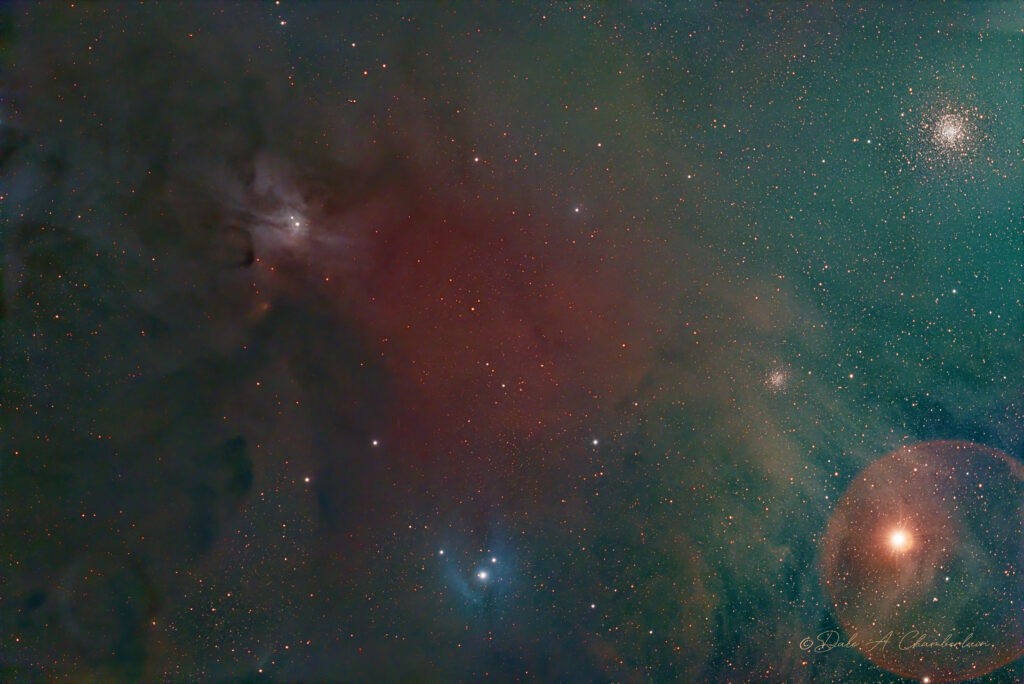
Object: The Rho Ophiuchi cloud complex is one of the nearest star-forming regions to the Sun. It lies at a distance of about 427 light-years from Earth. Visible from all inhabited locations on both hemispheres for at least a part of the year, the nebula is a popular target for backyard telescopes, as well as for scientific observations.
The nebula lies a degree south of Rho Ophiuchi and stretches across an area of 4.5 by 6.5 degrees of the sky. It is composed of emission, reflection, and dark nebulae. The brightest parts of the cloud complex include the nebulae IC 4604, IC 4603, and IC 4605.IC 4604, also known as the Rho Ophiuchi Nebula, is a reflection nebula illuminated by Rho Ophiuchi itself.
In addition to the Rho Ophiuchi nebula, there are several bright deep-sky objects appearing in the vicinity of the star. The globular cluster Messier 80 stretches across 10’ of the sky and has a spatial diameter of 95 light-years. With an apparent magnitude of 7.87, the cluster can be seen in small telescopes. It lies west of Rho Ophiuchi, about halfway between the brighter Antares and Acrab in Scorpius.Messier 4, another globular cluster, lies south of Rho Ophiuchi, about a degree and a half west of Antares.
The reflection nebula IC 4601 appears north and a little west of Rho Ophiuchi. It lies next to the larger reflection nebula IC 4592, named the Blue Horsehead Nebula. The Blue Horsehead Nebula is illuminated by the hot blue stars of the Nu Scorpii system, known by the traditional name Jabbah.
Rho Ophiuchi is in the constellation Ophiuchus, the Serpent Bearer. Representing the Greek mythical healer Asclepius, Ophiuchus is one of the 48 Greek constellations, first cataloged by the Greek astronomer Claudius Ptolemy in his Almagest in the 2nd century CE.
Also known as Serpentarius, Ophiuchus is typically depicted as a man holding a large snake, represented by the constellation Serpens.
Taken: June 20, 2022
Telescope: Skywatcher Esprit 80 ED Triplet APO Refractor
Mount: Paramount ME II
Camera: ZWO ASI2600MC-Pro (cooled to 0C; Gain 100) Bin 1×1.
Guiding: No autoguiding
Focuser: Starizona Micro Touch Autofocuser
Rotator: Optec Pixys LE camera field rotator
Filter Used: Optolong L-Pro
Exposures: 132×90 seconds for a total exposure time of 3 hours 18 minutes; calibrated with 40 dark frames, 40 flat frames with 40 dark-flats.
Seeing Conditions:
Image capture and telescope control: Nighttime Imaging ‘N’ Astronomy with (N.I.N.A.) / TheSkyX Pro with a SkyShed POD MAX observatory.
Processed with PixInsight, Photoshop CC 2022